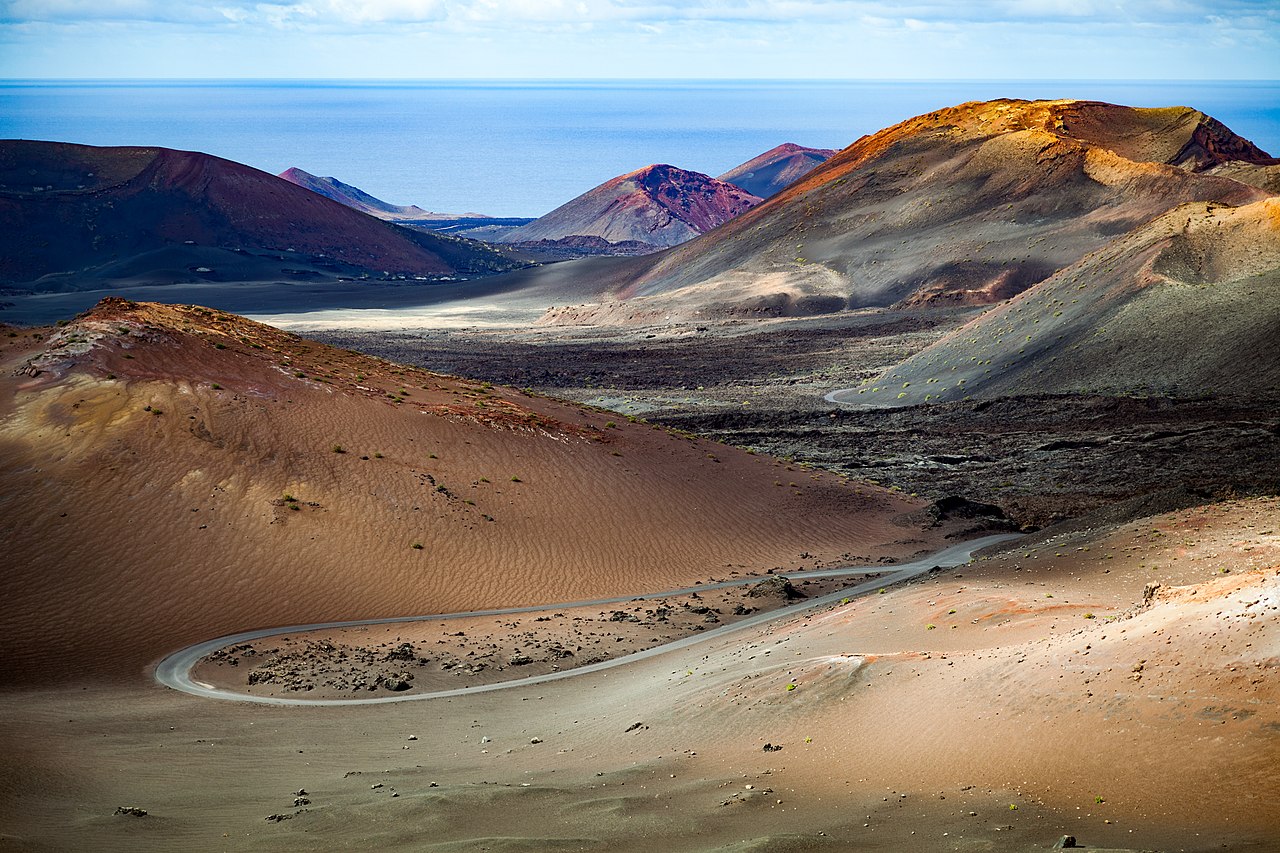
to talk to you about how many volcanoes are there in the canary islands we must immerse ourselves in the prehistory of our planet. Because the number of these geological formations is closely related to the very origin of that archipelago.
In any case, the Canary Islands have volcanoes that have already gone extinct along with others that are still still active. That is, they suffer eruptions from time to time. A good sample of them is the recent and tragic Old Summit that so much damage caused in the Island of La Palma. Therefore, we are going to dwell on the volcanic history of the archipelago and then tell you about how many volcanoes there are in the Canary Islands.
Volcanic history of the Canary Islands
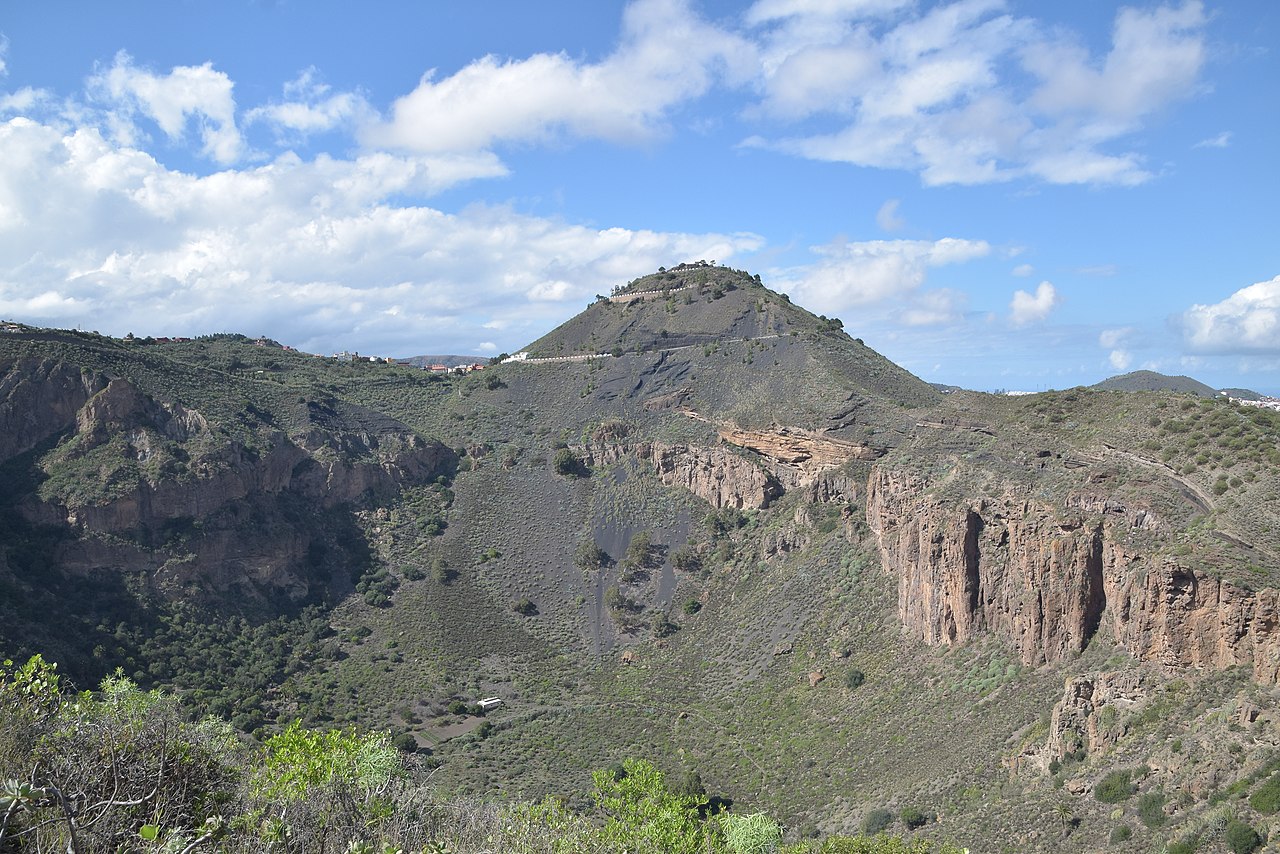
Bandama caldera in Gran Canaria
The first thing that we should point out regarding the history of this Spanish archipelago is that it is about a geological oddity. Because, normally, volcanoes form at the ends of tectonic plates. For example, another set of islands with many volcanoes and seismic movements like Japan It lies at the confluence of five large plates.
Sometimes these collide head-on, giving rise to the appearance of large mountain ranges. However, in other cases, one of them sinks causing warm magma to come out of the interior of the earth.
However, the Canaries are not at the edge of any plate, but in the middle of the African. But its islands were formed, precisely, by the outflow of that magma and it continues to have many active volcanoes. To explain this anomaly, experts have enunciated the hot spot theory.
This says that inside the planet where the Canary Islands are located, there is a thermal anomaly (the hot spot) that causes the rise of magma to the Lithosphere or uppermost layer of the earth. If it manages to fracture it and go outside, it forms a volcanic edifice that can appear as an underwater or surface volcano, but also as a a whole island.
Continuing with this theory, more than twenty million years ago, the African plate passed over that hot spot in the middle of the Atlantic Ocean. When it broke, it led to the exit to the surface of the magma. And, as the plate is always in motion, the expulsion was originating the different islands of the Canary archipelago. first created Fuerteventura, which is the oldest with an estimated age of twenty-three million years. then appeared Lanzarote, with about fifteen, and all the others followed. As for the youngest, they are La Palma, with 1,7 million years and El Hierro, which only has 1,1.
Possible flaws of the hot spot theory
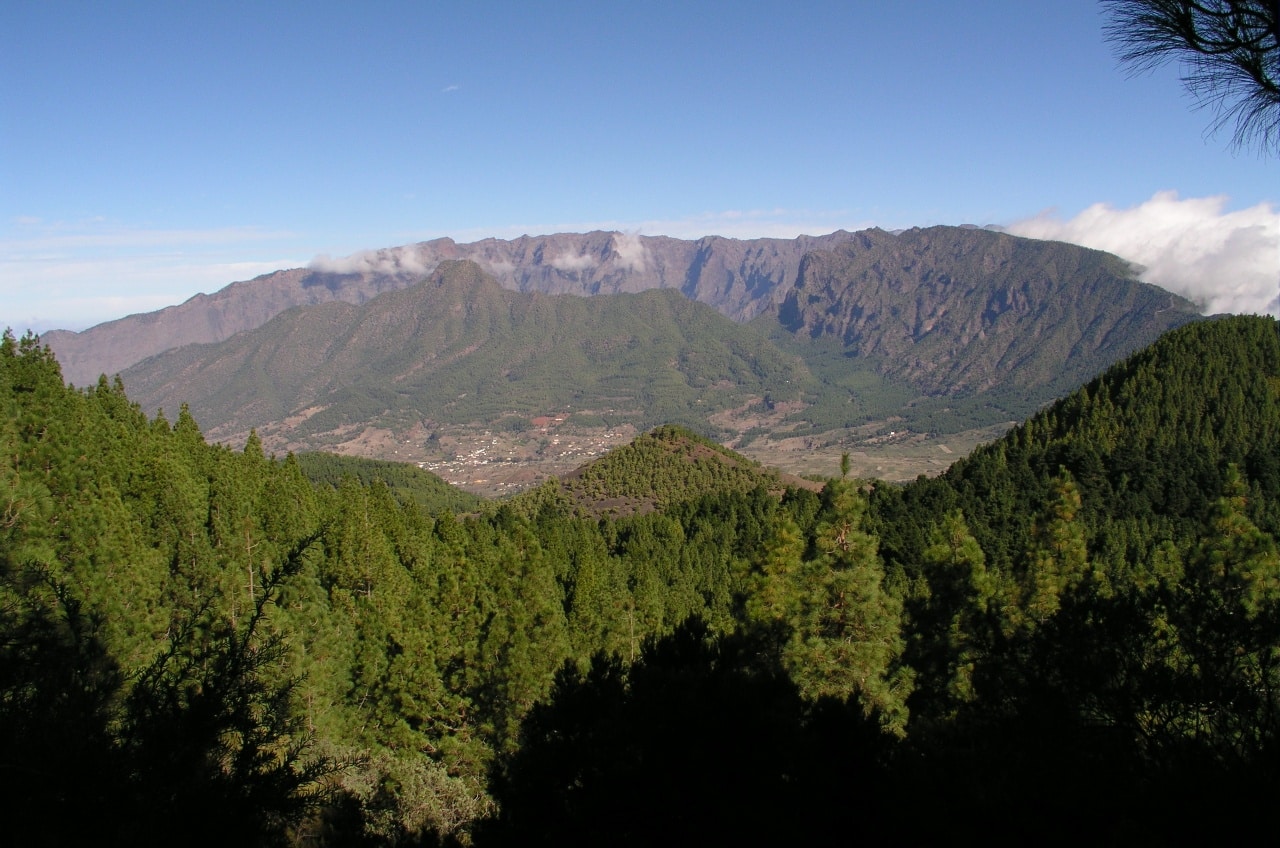
Caldera de Taburiente on La Palma
The hot spot thesis partly explains the origin of the Canary Islands, but it has aspects that are not met. For example, according to her, magma rises evenly, which should mean that the different islands and their volcanoes would have to follow a logical order. In other words, the oldest ones would have to have extinct volcanoes, while the active ones should be in the youngest.
But in the Canaries this is not the case. Even the oldest islands have active volcanism. To overcome this objection, geologists speak of the proximity of the Africa Craton, which is located about a hundred kilometers from the archipelago. It is a great mass of that continent that has remained stable and rigid for a long time. Therefore, it has completely cooled down.
Precisely, this contrast between the cold and the heat of the magma under the Canary Islands caused the latter to not always come out the same and, furthermore, that moved from one side to the other. All this would explain the lack of uniformity in the appearance of the islands of our archipelago and its volcanoes.
As you have seen, it is an exciting story. But, once we have explained it to you, we are going to talk about how many volcanoes there are in the Canary Islands to focus on the most famous.
How many volcanoes are there in the Canary Islands and which are the most famous?
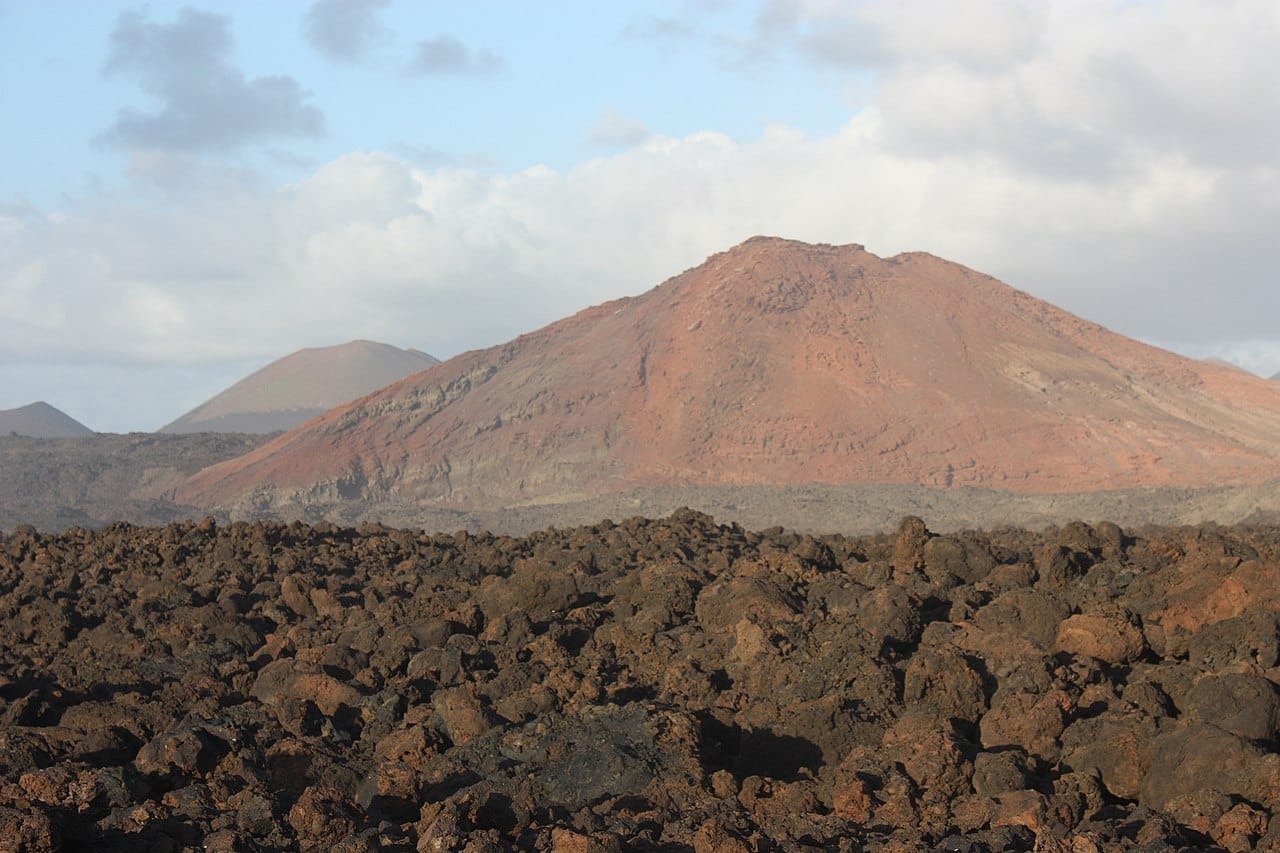
Caldera de Chozas in Lanzarote
It is time to tell you that the Canary archipelago has a total of thirty three volcanoes. Likewise, they are distributed among the islands as follows: Tenerife has the most with eleven, followed by La Palma and Gran Canaria with ten, Fuerteventura has six, Lanzarote five and El Hierro one.
You will probably be surprised by the number of those in Lanzarote, since it happens to be the volcanic island par excellence with its Timanfaya national park And it only has five. On the other hand, it is also important that you know what the experts use to rate the activity of a volcano.
Is considered extinct when it takes at least fifteen thousand years without erupting. Instead, it is qualified as asset if you have had more recent breakouts. However, if it has not shown activity in a few thousand years, it is considered asleep. This means that it can reactivate whenever. But, once we have given you the number of volcanoes there are in the Canary Islands, we are going to show you the most famous.
El Teide in Tenerife
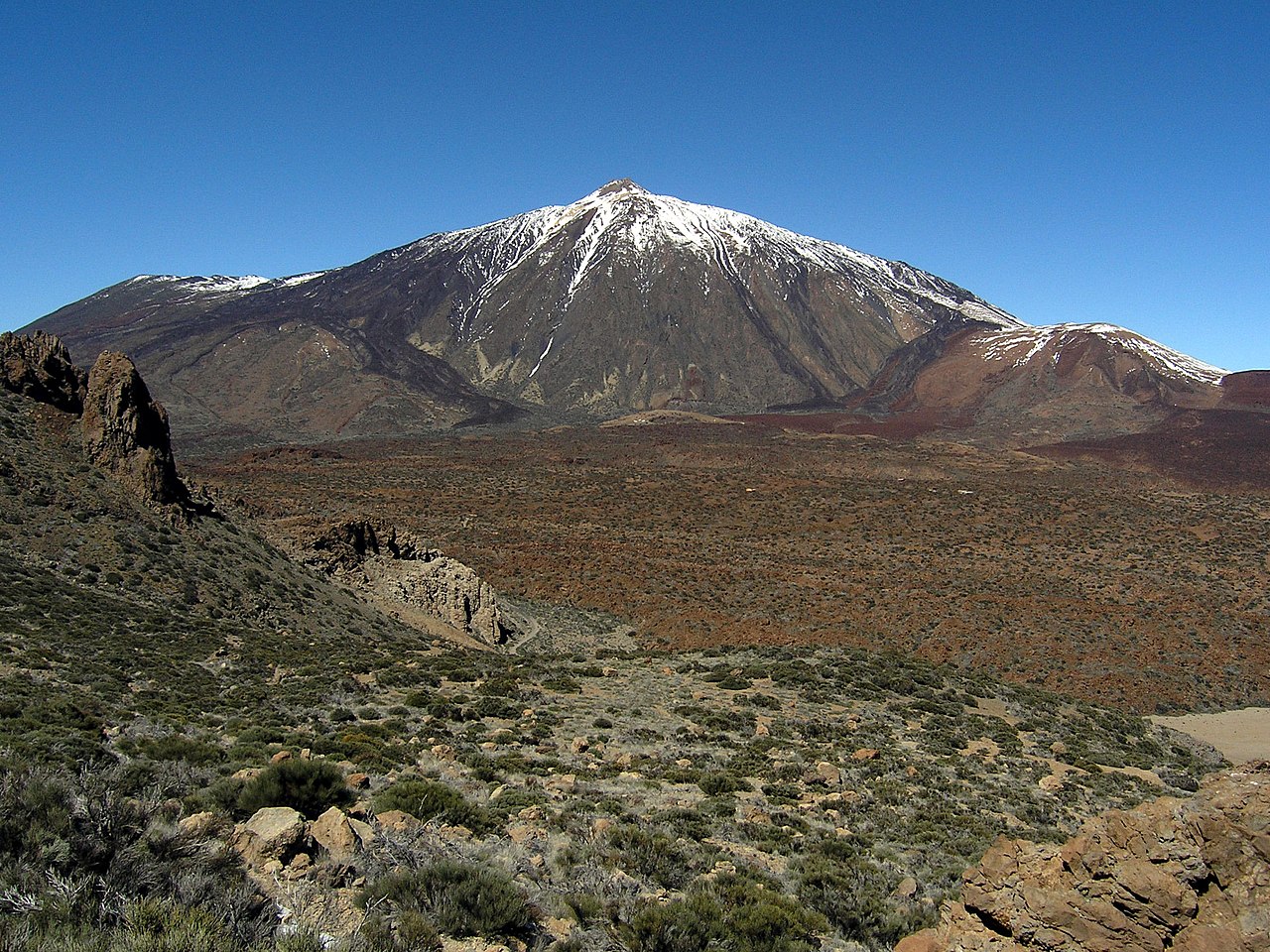
View of Teide, the most important volcano in the Canary Islands and the highest mountain in Spain
Although many people know that Teide is the highest peak in Spain, not all know that it is a volcano and, moreover, active. In fact, at 3715 meters above sea level, it is the third highest in the world. They only surpass him Mauna Kea with 4207 and the Mauna loa with 4169, both in the archipelago of Hawaii.
Its last eruption is estimated to have taken place between the XNUMXth and XNUMXth centuries AD. From then come the black lavas that cover its cone. But it is more important that you know that it is the main natural monument of the Teide National Parkdeclared Heritage by Unesco. Together with him, he is made up of the Old Peak and both have created a huge Vesuvian-class stratovolcano.
Precisely and despite its name, Pico Viejo erupted much less time ago. It was in 1798 and gave rise to the calls Teide noses, which can be seen at its top. In fact, it still regularly emits fumaroles or vapors.
Finally, as an anecdote, we will talk about the phenomenon of the shadow of Teide. He says that this has the largest in the world projected onto the sea. Not in vain, he comes to partially cover the island of Gran Canaria at sunset and La Gomera when dawn Furthermore, it is a perfectly triangular shadow, whereas the mountain is not as geometrically exact.
Tindaya mountain in Fuerteventura
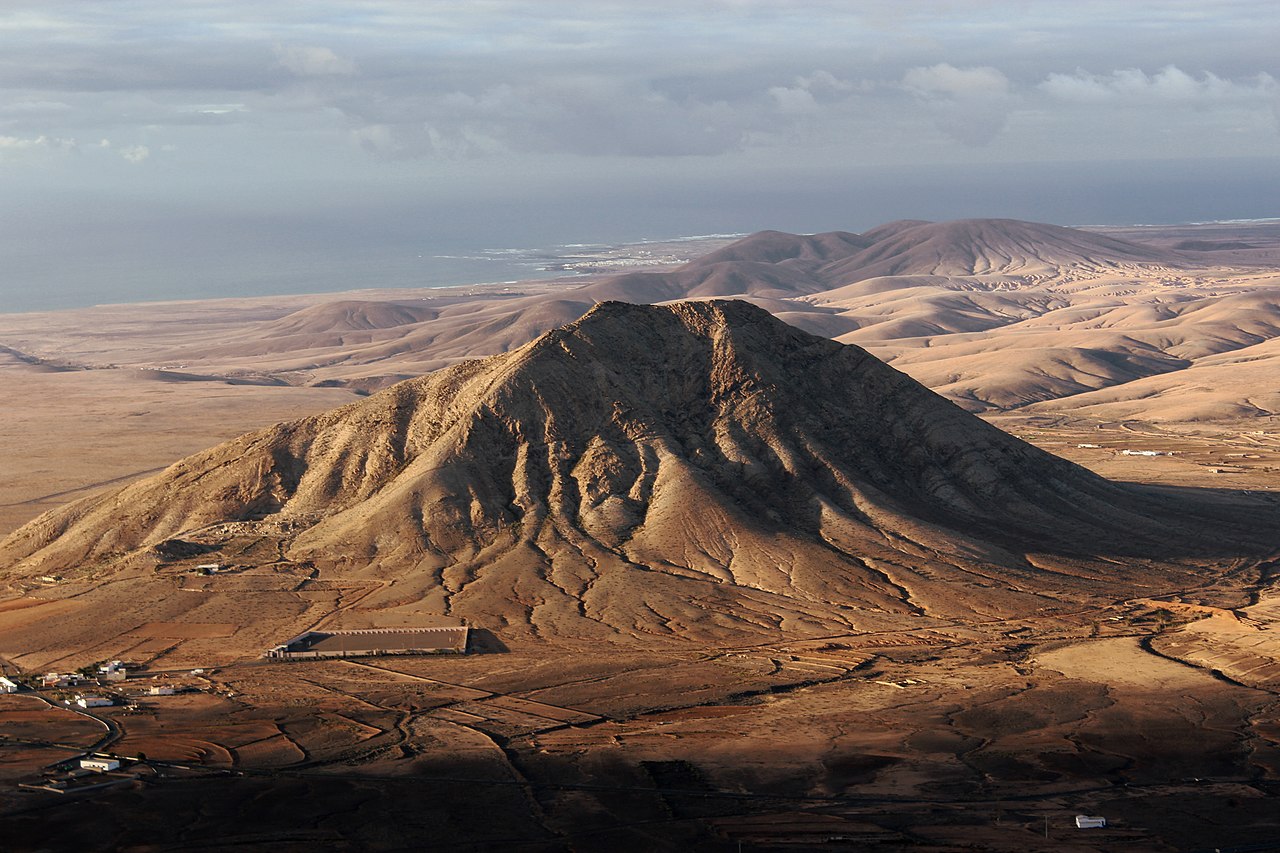
Tindaya mountain in Fuerteventura
Just as important as knowing how many volcanoes there are in the Canary Islands is that you know a little about their history. Therefore, now we are going to talk to you about this volcano that is the symbol par excellence of Fuerteventura island and one of the most important in the entire Canary archipelago. Tindaya only has a height of 400 meters above sea level, but it was considered sacred by the majos, that is, by the aborigines of Fuerteventura.
In fact, if you visit it, you will be able to see numerous rock carvings made by those. Apparently, the natives made its summit a outdoor temple where they worshiped the stars and invoked the rain for their crops. These engravings have the shape of feet and are not distributed haphazardly, but ordered by a pattern. Many point to other mountains in the archipelago like the one itself Teide or Snow Peak in Gran Canaria.
Teneguía on La Palma
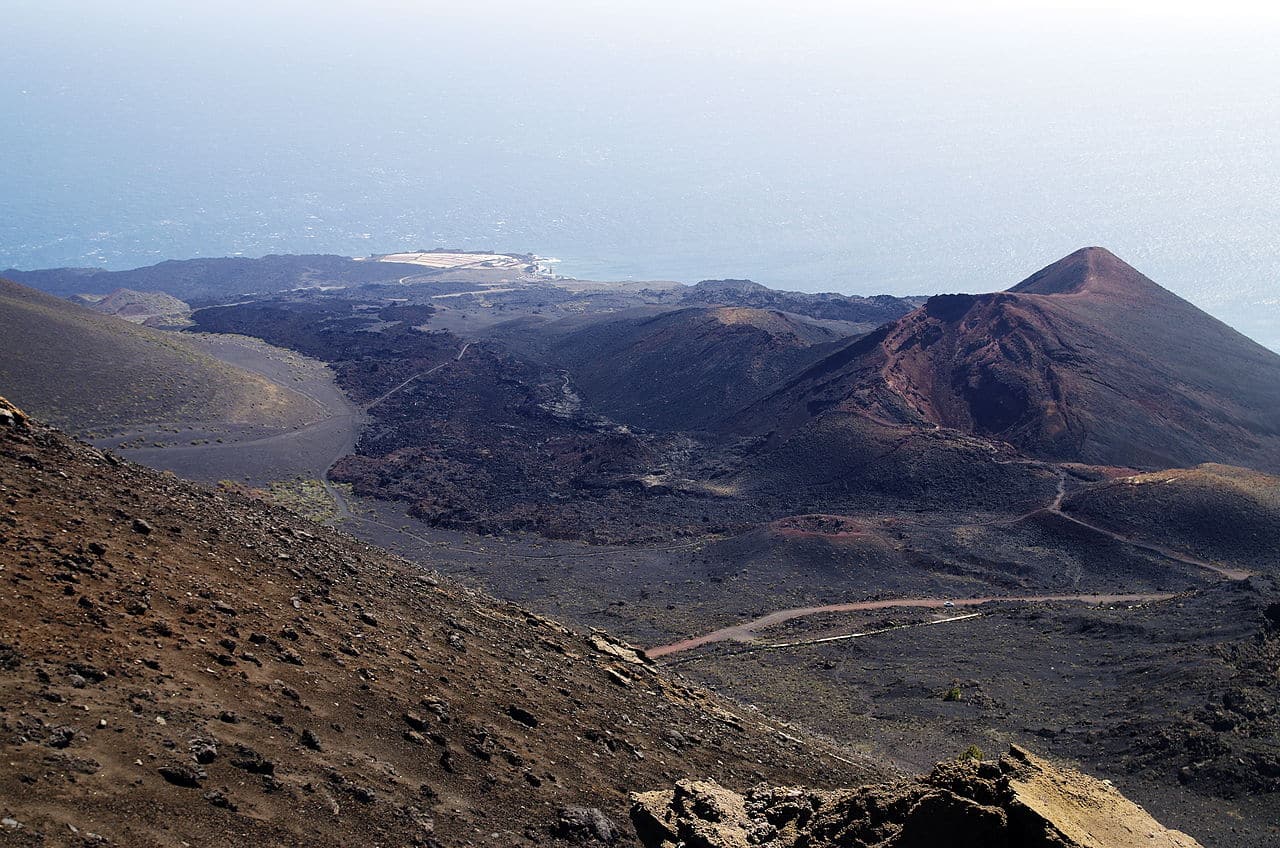
The Teneguía volcano on La Palma
This volcano is located in the municipality of Fuencaliente, which, in turn, is in La Palma. It is very recent as a mountain, since its slopes originated with the eruption of 1971. It receives its name from Roque de Teneguia, which is nearby and which, likewise, appeared due to another expulsion of lava, this one that occurred in 1677.
On the other hand, also in the latter you can see engravings and petroglyphs made by the aborigines of the island, who, likewise, would have baptized it. According to scholars, had would mean "hot steam or smoke." The maximum height of this volcano is 431 meters above sea level. As a curiosity, we will tell you that the eruption that created it was not one of the largest that occurred in the Canary Islands. Despite this, it ejected forty million cubic meters of lava that flowed at about one hundred miles per hour.
Timanfaya in Lanzarote
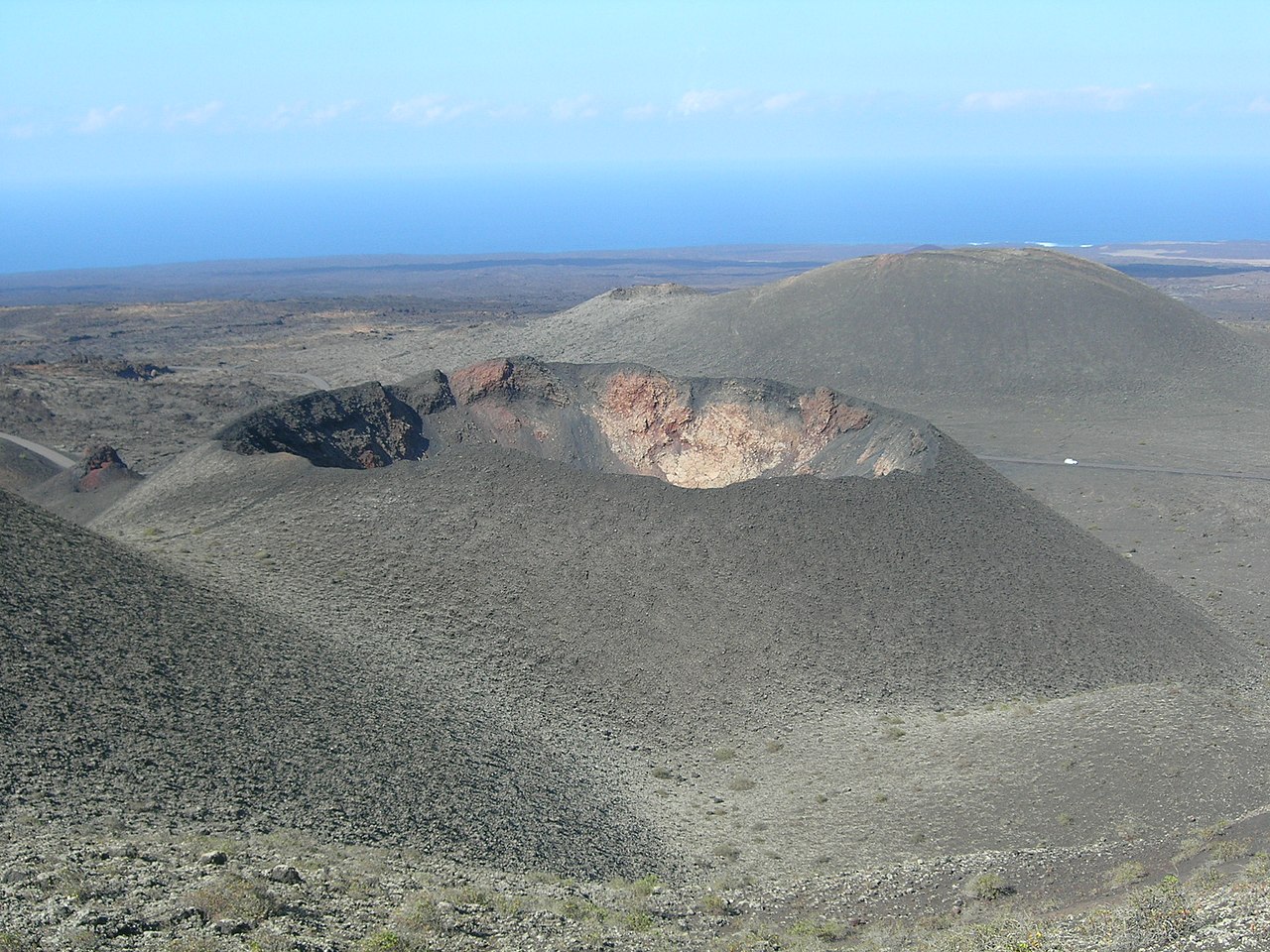
A crater in Timanfaya
The volcano that gives its name to the most famous park on the island of Lanzarote also gave rise to one of the most tragic eruptions of the archipelago in our era. It was in September 1730 and it completely changed the appearance of the island. In fact, the lava covered twenty-five percent of its territory and buried nine towns.
Many inhabitants had to emigrate due to the famine it caused. But, curiously, after a while, the lands became more fertile. In any case, this is by no means the only volcano in the national park that it nominates, as it has a total of twenty five that are still active. To check it, all you have to do is throw a little straw on the ground. You will see how it lights up. And it is that only ten meters deep temperatures reach six hundred degrees centigrade.
In conclusion, we have talked to you about how many volcanoes are there in the canary islands. But we have also shown you some of the most famous. It is true that we could mention many others. For example, the Bandama boiler in Gran Canaria, the Raven Mountain in Lanzarote itself or the Caldera de taburiente in La Palma. However, perhaps the most curious is Tagoro's, riding a El Hierro, since it is submerged in the sea. By the way, it also had a rash a few years ago.